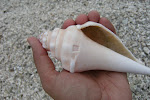A public hearing for discussions on the CNMI Draft Environmental Impact Study (D-EIS) )was yesterday. I couldn’t attend because it was in the morning. Also, a newspaper article said that it would be presented on Saipan yesterday the 27th, and then contradicted itself saying that it was on Friday instead at the end of the article (No time was given neither by the way). I heard about 50 people attended but also heard that there were no voices of concern about possible harm. An online version of the D-EIS is supposed to be put up today on the Commerce website .
Here is a video clip that I found on several blogs about the buildup. This happened recently in the village of Santa Rita and was attended by about 316 people. The clip has about 4 women sharing their concerns.
Drea of Waiting for Wonderland has this wonderful allegory that compares the Chamorro legend of a giant fish that was eating Guahan in the days of the ancients. The women are the heroines of the legend which is a reflection of the respect and empowerment that the ancient people have for women and their role in society. She wrote:
Sleepless in Wonderland: The Real Big Fish
The reason this legend has been on my mind, is because I've been looking at many maps of Guam recently. Yes, our island is narrow in the middle, but I've also noticed that there are many parts of our island that is innaccessible to the people of Guam. It's as if the big fish has returned. This big fish is feasting on the graves of our ancestors and land that is lush and beautiful. Sometimes this big fish spits out the the land, returning it to us, but by that time much of the land is contaminated.
What will our island look like 4 years from now? How much of it will be contaminated by the big fish? Where will we be 20 years from now? Will we be telling our grandchildren the story of the fish that annhilated our island?
We must gather together, like the women in the original legend, to defend our home, before there is nothing left to defend.
Her soul sister Nella of Resolution Tree added an illustration to the story of a Guahan that is “eaten up” by the “big fish” that is illustrative of DOD occupied land in 1991.

WHAT ABOUT CNMI?
I thought that I should attempt a political cartoon in homageto not only their creativeness but mostly due to their sincere concern for the future of Guahan and its people.
 I also already have one sketched with a CNMI angle in which our people is represented by a hand readily handing over the islands of Tinian and Aguijan in a food bowl to the “big fish.” I hope it turns out good enough to start the gears working in our thoughts.
I also already have one sketched with a CNMI angle in which our people is represented by a hand readily handing over the islands of Tinian and Aguijan in a food bowl to the “big fish.” I hope it turns out good enough to start the gears working in our thoughts.

Aguijan from Tinian.
Are we really so eager to turn over Tinian and Aguijan? I love Tinian for how peaceful and beautiful it is. Aguijan is historically important as well, being the last place of resistance during the Chamorro-Spanish Wars. Here is a story about offering Aguijan as an “alternative” to Guahan. Here is a clue to an environmental impact that is already forseen if Tinian is taken over.
Let us talk stories about this again.
Ti napu.
The Beachcomber


No comments:
Post a Comment